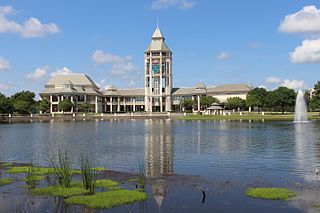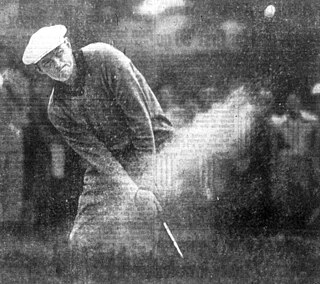Publications
Barkow has made significant journalistic contributions to the following publications: The New York Times , Sports Illustrated , The Wall Street Journal , Golf Magazine , Golf Digest , Golf World , Sport , Senior Golfer, Golf Monthly (UK), USGA Golf Journal, Travel & Leisure , The Boston Globe Sunday Magazine, Signature, Diversion, Golf Journal, Links Magazine, The Majors Series, Golfiana, Golf Tips Magazine, The GolfWeb, IDV/Sports.

Samuel Jackson Snead was an American professional golfer who was one of the top players in the world for the better part of four decades and widely regarded as one of the greatest players of all time. Snead was awarded a record 94 gold medallions, for wins in PGA of America Tour events and later credited with winning a record 82 PGA Tour events tied with Tiger Woods, including seven majors. He never won the U.S. Open, though he was runner-up four times. Snead was inducted into the World Golf Hall of Fame in 1974.

Gene Sarazen was an American professional golfer, one of the world's top players in the 1920s and 1930s, and the winner of seven major championships. He is one of five players to win each of the four majors at least once, now known as the Career Grand Slam: U.S. Open , PGA Championship , The Open Championship (1932), and Masters Tournament (1935).

William Ben Hogan was an American professional golfer who is generally considered to be one of the greatest players in the history of the game. He is notable for his profound influence on golf swing theory, inventing the idea of practicing golf and his ball-striking ability.

John Joseph Burke Jr. was an American professional golfer who was most prominent in the 1950s. The son of a professional golfer, Jack Burke Sr., he won two major titles, both in 1956, the Masters and PGA Championship, and is a member of the World Golf Hall of Fame.

James Newton Demaret was an American professional golfer. He won 31 PGA Tour events in a long career between 1935 and 1957, and was the first three-time winner of the Masters, with titles in 1940, 1947, and 1950.

John Byron Nelson Jr. was an American professional golfer between 1935 and 1946, widely considered one of the greatest golfers of all time.

Thomas Oliver Kite Jr. is an American professional golfer and golf course architect. He won the U.S. Open in 1992 and spent 175 weeks in the top-10 of the Official World Golf Ranking between 1989 and 1994.

The World Golf Hall of Fame was, until recently, located at World Golf Village between Jacksonville, Florida and St. Augustine, Florida, in the United States. It is unusual amongst sports halls of fame in that a single site honored both men and women. It is supported by a consortium of 26 golf organizations from all over the world. It is moving back to Pinehurst, North Carolina, with the new campus opening in 2024.
The following is a partial timeline of the history of golf.

The men's major golf championships, commonly known as the major championships, and often referred to simply as the majors, are the most prestigious tournaments in golf. Historically, the national open and amateur championships of Great Britain and the United States were regarded as the majors. With the rise of professional golf in the middle of the twentieth century, the majors came to refer to the most prestigious professional tournaments.

Arthur D'Arcy "Bobby" Locke was a South African professional golfer. He is generally regarded as one of the greatest golfers of all time. He won The Open Championship four times and 15 PGA Tour events in total. In addition, he was a prolific tournament winner in South Africa, ultimately recording over 50 significant victories in his home country, including the South African Open nine times.

James Bennett Elliott Ferrier was an Australian professional golfer from Manly, New South Wales. After compiling a fine record as an amateur golfer in Australia during the 1930s, he moved to the United States in 1940, turned professional in 1941, and joined the U.S. PGA Tour. He won the PGA Championship in 1947, among his 18 Tour titles, and was the first Australian and first golfer from the southern hemisphere to win a professional golf major title. Ferrier became an American citizen in 1944.
Paul Scott Runyan was an American professional golfer. Among the world's best players in the mid-1930s, he won two PGA Championships, and is a member of the World Golf Hall of Fame. Runyan was also a golf instructor.
The following is a partial timeline of the history of golf.

Fred J. Corcoran was a golf tournament director, publicist, agent and business manager. Known around the world as "Mr. Golf," he was one of the first non-players to be inducted into the World Golf Hall of Fame in 1975. He acted as tournament manager of the PGA in the 1930s, promotion manager in the 1940s; the founder of the LPGA, the Golf Writers Association of America, the Metropolitan Golf Writers Association; tournament director of the Thunderbird and Westchester Classic; and the director of the International Golf Association. In addition to golf, his diverse career also included the world of baseball, boxing, hockey, football as he at one time managed the business affairs of Sam Snead, Ted Williams, Babe Zaharias, Stan Musial, Tony Lema, Ken Venturi, Seve Ballesteros, Tom Weiskopf and Pete Gogolak.

Edward Stewart "Porky" Oliver, Jr. was a professional golfer from the United States. He played on what is now known as the PGA Tour in the 1940s and 1950s.
Joseph Charles Dey Jr. was an American golf administrator and a member of the World Golf Hall of Fame.

Wilson Staff is Wilson's premium golf brand aimed at tour professionals and serious players. Wilson designs and manufactures a full range of golf equipment, accessories, and apparel using the Wilson Staff, Wilson, ProStaff, Profile, Ultra and Hope brands. Wilson's other lines are generally considered to be "big box," "value," or "economy" brands, while the Wilson Staff line provides higher quality equipment used on all major professional golf tours.
The Miami Open was a golf tournament on the PGA Tour from 1924 to 1955. It was played at what is now the Miami Springs Golf & Country Club in Miami, Florida. The event was played in December from 1924 to 1926 and from 1937 to 1955. It was played in early January from 1928 to 1937.
The 1955 U.S. Open was the 55th U.S. Open, held June 16–19 at the Lake Course of the Olympic Club in San Francisco, California. In one of the greatest upsets in golf history, Jack Fleck, a municipal course pro from Iowa, prevailed in an 18-hole playoff to win his only major title and denied Ben Hogan a record fifth U.S. Open.













